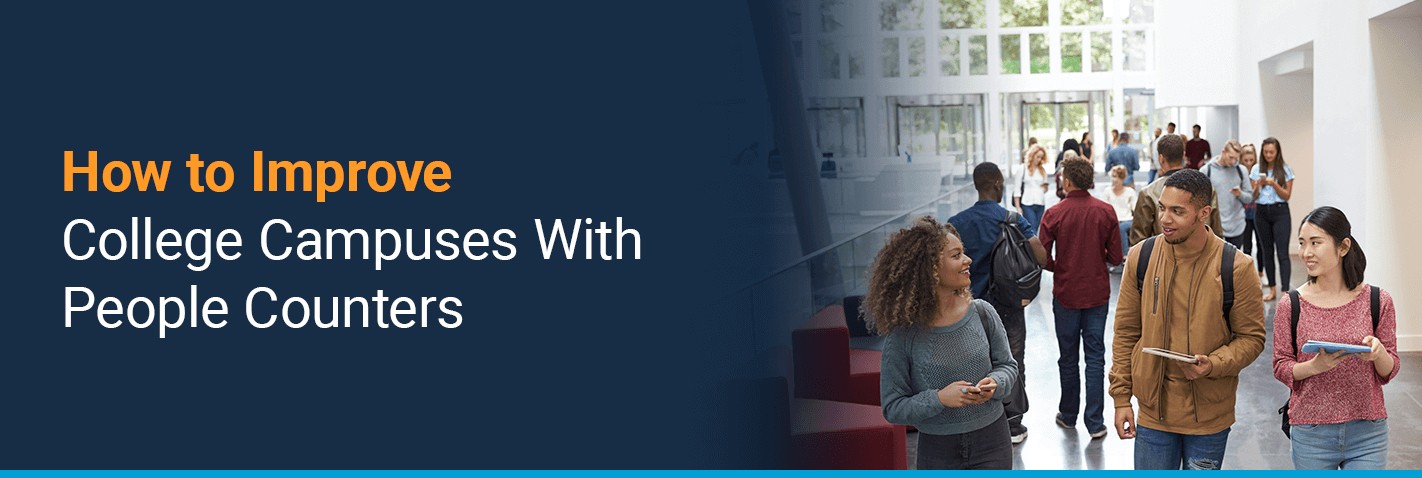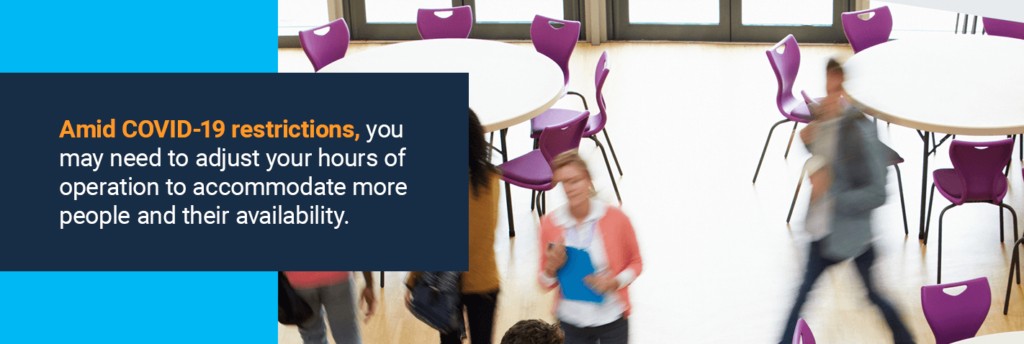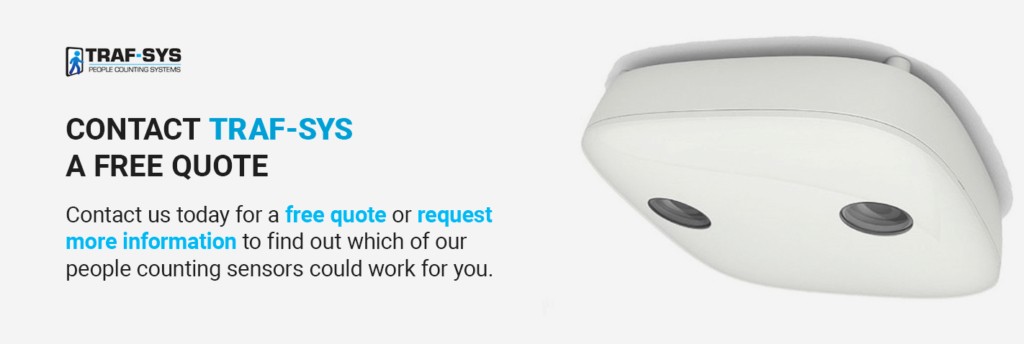

Table of Contents
College is for more than academics — students and faculty bustle around cafeterias, dorms and sports facilities all over campus. Knowing the number of people that occupy a certain space at any given time of the day or week can help determine staffing and cleaning schedules.
If you’re preparing to welcome students and faculty back to your college campus this year, improve your campus space with people counters. People counters provide valuable data about daily traffic to areas of your campus, which you can use to enhance campus life for both students and faculty.
People counters allow you to monitor hotspots where foot traffic is regularly high. Areas like libraries, on-campus cafes or restaurants and gyms are commonly crowded during specific times of the day. With people counters in these hotspots, faculty and staff can use the data to effectively attend to and clean these areas and even set maximum capacities to keep the campus community healthy.
Libraries have become more than just shelves of books. These days, you can find endless physical and digital resources in these buildings, especially on college campuses. As a result, both students and faculty frequently access libraries for materials for classes. However, college libraries can also be a haven, offering quiet spaces to get work done, collaborate on group projects or apply to internships and jobs.
People counters in a library can track the number of people entering and moving about the library space, offering you accurate daily visitor counts and a better sense of the most occupied areas of the library. This knowledge allows you to serve your campus community better. Essentially, you can determine areas where traffic could flow more effectively so you can make changes to the layout to improve your visitors’ experience.
On-campus cafes and restaurants are consistently high-traffic areas, particularly on big campuses. Using people counters in these areas of campuses is essential for determining the busiest times of the day. Knowing the specific times when students and faculty commonly eat in these spaces and the length of time they spend there will be valuable information to you.
Having this information can allow you to adequately staff the high-traffic cafes to help serve patrons more efficiently. You’ll also be able to determine the most convenient times for cleaning and resetting tables. When you understand how the campus community uses the cafe and restaurant spaces, you can create dining layouts that make the most of the space to improve visitors’ overall experiences.
Gyms and sports facilities on campus are often the hosts of sports events and special programs because they provide large amounts of space for crowds to gather. People counters can help you identify peak hours of operation, which staff can use when scheduling gym classes, programs and other events. If you have a particularly popular course or program that draws large crowds, you can use this data to determine if it’d be beneficial to offer more than one session.
People counter data helps you prevent overcrowding, which will improve your gym members’ experience. Gym facilities also require frequent cleaning as occupants leave or move to other areas of the facility. Monitoring high-traffic areas of the gym can help you determine how often cleaning should occur — and with more sensors in place, you can learn when gym-goers leave an area, helping ensure staff clean the equipment before the next use.
Implementing people counters into your college campus facilities will benefit you and the campus community. These sensors can help administrators monitor occupancy limits and schedule usage-based cleaning to keep students and staff safe upon returning to campus.
Colleges can benefit from people counters for the following reasons:
People counters are beneficial in determining when people use your facilities the most. This data will benefit you and your college community because it allows you to better prepare the area for high volumes of people. You may need to adjust your hours of operation to accommodate more people and their availability. People counters can be key in helping to determine these needs.


Once you use people counters to identify peak hours, you can then determine what times may require more or fewer staff members. Your facilities will operate more efficiently when enough employees can staff them. Using this data to schedule your staff can also be more cost-efficient, as you can save hourly wages at times when you don’t need as much staffing.
With increased sanitation needs across campuses, maintenance workers may find it more challenging to determine which areas need more attention than others. People counters can be beneficial in helping you assess high-traffic areas within each facility, allowing cleaning staff to better focus their efforts on the areas they need to clean most often. Using this data to schedule usage-based cleaning will save you and your staff time and resources. Regularly and consistently cleaning hotspots also ensures the health and safety of the campus community.
People counters offer an accurate way to track the number of visitors at any given moment. This knowledge can be especially helpful in setting and maintaining occupancy limits in your facilities. Keeping a manual tally can be unreliable, time-consuming and takes a staff member away from other tasks. People counters offer you an efficient way to collect this data.
College campuses often struggle to receive funding for their facilities. For example, academic libraries receive less than two cents of every dollar that goes to higher education. You can use the data from the people counters around your campus facilities to help justify your need for more funding.
People counters are a valuable way to collect data about foot traffic through your campus facilities. Their benefits help you efficiently operate these facilities, improving the campus and the experience for students and staff. If you’re looking to implement people counters to benefit your college campus, Traf-Sys people counting systems are the solution you’re looking for.
Contact us today for a free quote or request more information to find out which of our people counting sensors could work for you.

